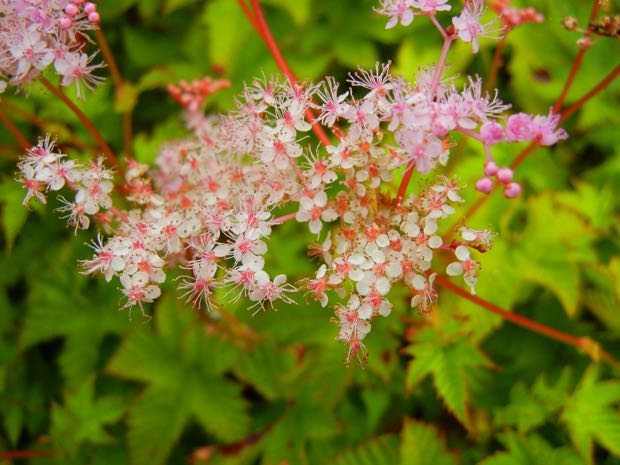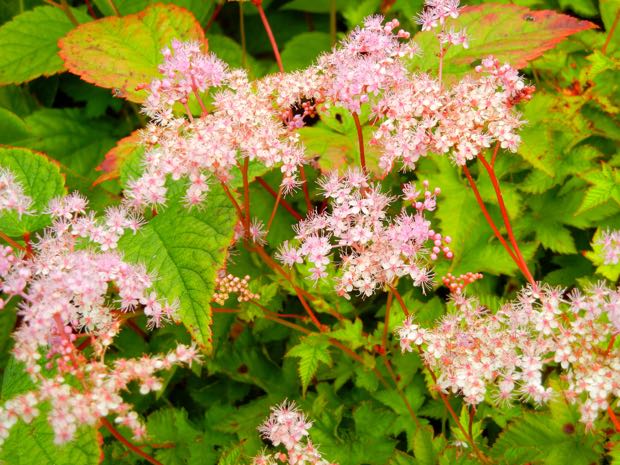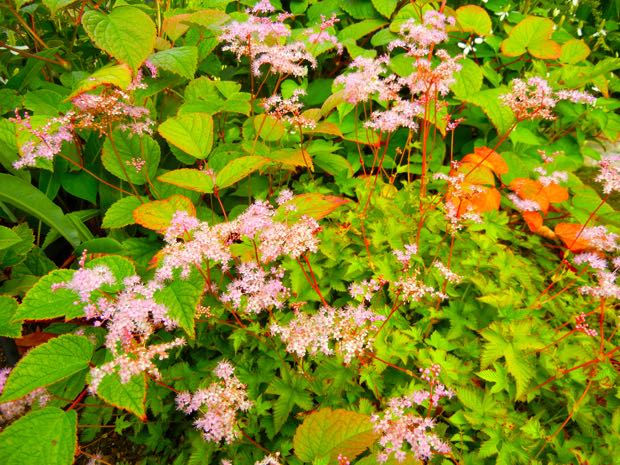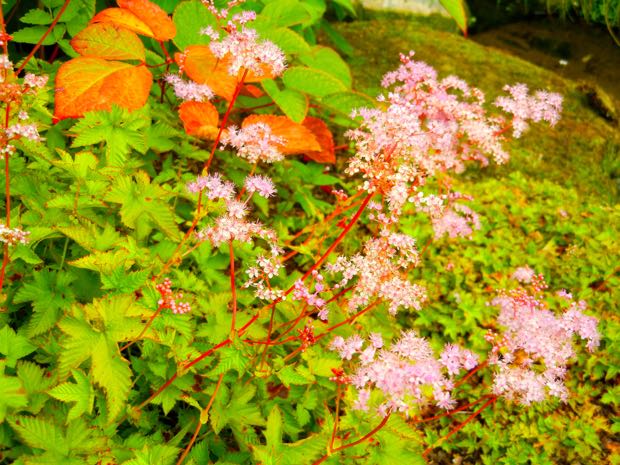Filipendula palmata ‘Nana’: A Dwarf Meadowsweet with Fern-Like Foliage and Rosy-Pink Flowers
Overview: Filipendula palmata ‘Nana’ also known as Nana Meadowsweet, is a delightful dwarf perennial that adds a touch of elegance to any garden. With its fern-like palmate leaves and clusters of rosy-pink flowers, this easy-to-grow plant thrives in moist locations. Native to Mongolia, China, and Russia, Filipendula palmata ‘Nana’ is a member of the Rosaceae family. Its compact size and attractive features make it an excellent choice for borders, rock gardens, and water gardens. In addition, it is known for its resistance to deer.
Background: Filipendula palmata ‘Nana’ is a dwarf variety of the Common Meadowsweet (Filipendula ulmaria). It is a hardy herbaceous perennial that reaches a height of about 30 cm (12 inches). The deeply divided green leaves and feathery rosy-pink flowers adorn the plant during the summer months. With its tolerance for various soil types and conditions, Filipendula palmata ‘Nana’ is a versatile and low-maintenance plant.
Characteristics:
Filipendula palmata ‘Nana’ is a dwarf perennial plant that exhibits several distinct characteristics. It features delicate, fern-like palmate leaves that can reach up to 12 inches in length, with a woolly underside adding to its visual appeal. During the summer months, this plant produces small, rosy-pink flowers that are typically 1/4 to 3/8 inches wide. The flowers are borne on airy corymbs, which can grow up to 8 inches long, creating an elegant and graceful display.
As a clumping perennial, Filipendula palmata ‘Nana’ forms neat mounds of foliage, making it a lovely addition to perennial borders or rock gardens. Additionally, it is known for its tolerance to a variety of soil types and conditions, and its preference for moist locations further highlights its adaptability. With its charming foliage and attractive blooms, Filipendula palmata ‘Nana’ brings beauty and elegance to any garden setting.
Flower and Leaves Details: Filipendula palmata ‘Nana’ features fern-like palmate leaves that can grow up to 12 inches long. The undersides of the leaves have a woolly texture, adding to the plant’s visual appeal. In summer, the plant produces small rosy-pink flowers arranged in airy corymbs up to 8 inches long. The flower stems may be branched or simple, creating an elegant and delicate display.
Origin and Other Names: Native to Mongolia, Russia, China, and Japan, Filipendula palmata ‘Nana’ finds its origins in these regions. It is also commonly known as Digitata Nana, highlighting its compact growth habit and fern-like foliage.
Cultivation of Filipendula palmata ‘Nana’:
Filipendula palmata ‘Nana’ thrives in partial to full sun and prefers humus-rich, fertile, and moist soil. It can tolerate both well-drained and poorly-drained soil conditions. Adequate moisture is crucial for this plant, as it is not drought-tolerant. In hot climates, it is advisable to provide some shade to protect it from intense sunlight. Deadheading is not necessary, as spent flower heads remain attractive. Trimming the plant down at the end of the season can help maintain its neat appearance. Filipendula palmata ‘Nana’ is generally resistant to pests and diseases. However, in humid climates, it may be susceptible to powdery mildew, which can be treated with a fungicide if needed.
Planting: Plant Filipendula palmata ‘Nana’ in spring or fall in a location that receives partial to full sun. Prepare the soil by ensuring it is moist, well-drained, and enriched with organic matter.
Watering: Regular watering is essential, particularly during the first year after planting. Once established, Filipendula palmata ‘Nana’ becomes more drought-tolerant, but it still requires consistent moisture to thrive.
Fertilizing: Fertilize Filipendula palmata ‘Nana’ once a year in the spring with a balanced fertilizer. This will provide the necessary nutrients for healthy growth and vibrant blooms.
Pruning: To encourage new blooms, deadhead spent flowers by removing them from the plant. This will also help maintain the plant’s neat appearance. Additionally, divide the clumps every 3-4 years to ensure the plant remains healthy and vigorous.
Pests and Diseases: Filipendula palmata ‘Nana’ is generally resistant to serious pest and disease issues. However, in humid climates, it may be susceptible to powdery mildew. If you notice signs of powdery mildew, treat the plant with an appropriate fungicide to prevent further spread.
In conclusion, Filipendula palmata ‘Nana’ is a charming dwarf perennial that brings beauty to gardens with its fern-like foliage and rosy-pink flowers. Its adaptability to various soil conditions and resistance to deer make it an excellent choice for different garden settings. By providing moist, well-drained soil, partial to full sun, and regular care such as watering, fertilizing, pruning, and pest control, you can enjoy the graceful presence of Filipendula palmata ‘Nana’ in your garden for years to come.







